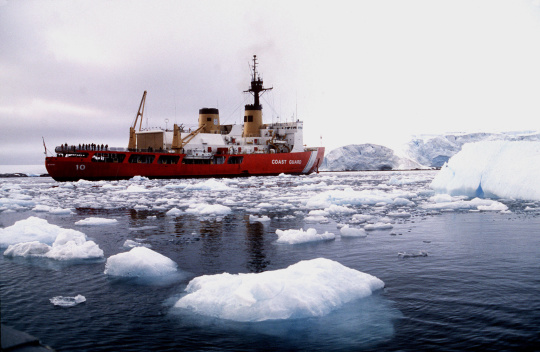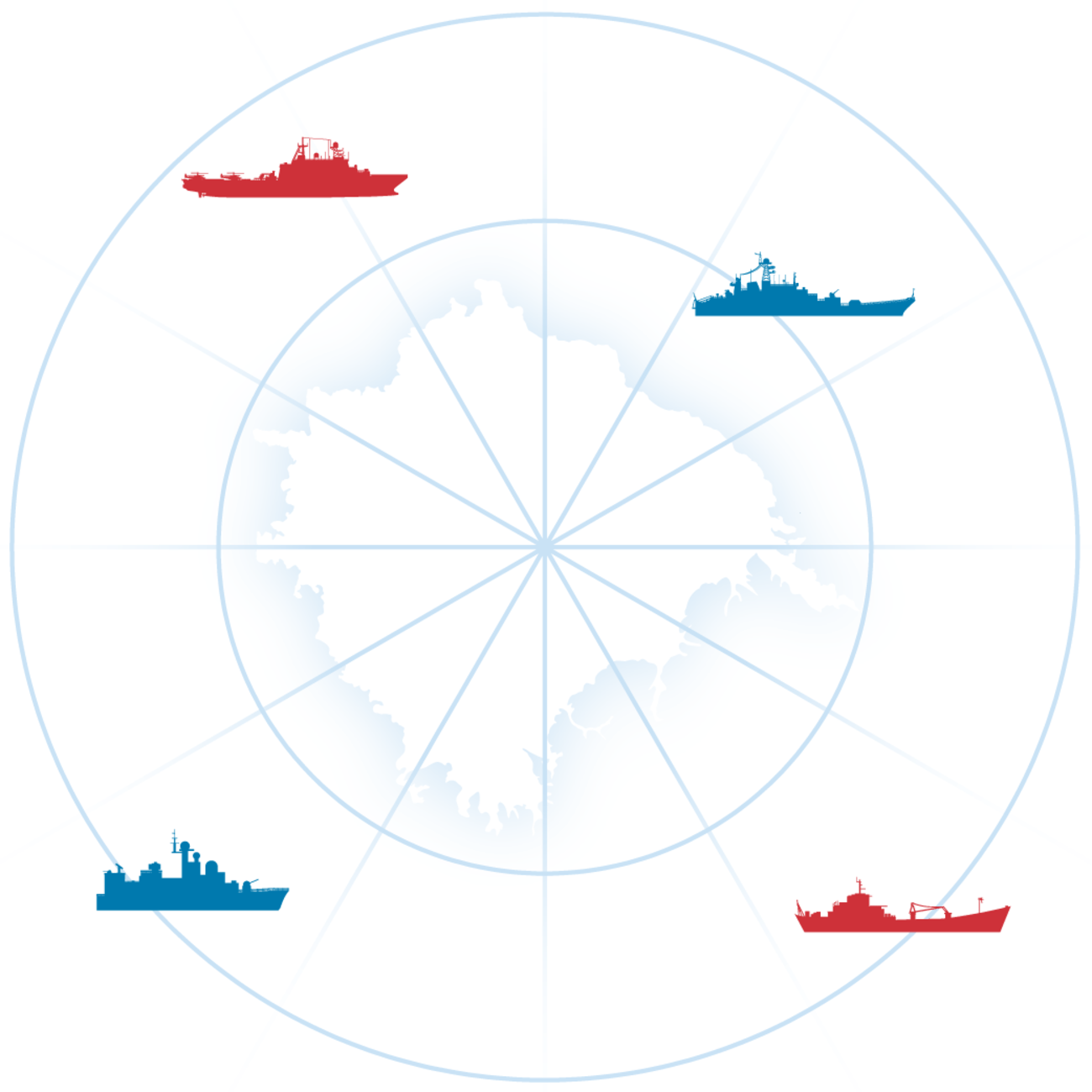Trump’s Arctic Goals Demand Icebreakers, But U.S. Struggles to Build Them; See How Russia Is Winning the Race to Dominate the Arctic: Moscow is Growing its Footprint at the Top of the World, Working with China—and Leaving the U.S. Behind
Trump’s Arctic Goals Demand Icebreakers, but U.S. Struggles to Build Them:
President plans to order 40 large icebreakers, but shipbuilding industry has been declining for decades
At 13,000 tons, the U.S. Coast Guard’s Polar Star is a mammoth vessel made to cut through Arctic ice more than 20 feet thick. But it is the U.S.’s only icebreaker that operates year-round, and it was built nearly half a century ago.
In the intensifying global race to access the Arctic, icebreakers are the essential tool to open trade routes, allow resource extraction and project military power. The U.S. and its allies have fallen far behind Russia, and China is rapidly gaining ground with the help of the world’s largest shipbuilding industry.
President Trump has signaled that he wants to put the Arctic back at the top of the U.S.’s priority list. He has said the U.S. needs to take ownership of Greenland for national security and that the Coast Guard will expand its fleet of icebreakers.
“We’re going to order about 40 Coast Guard big icebreakers. Big ones,” Trump said last month.
That will be a tall order to fill. The U.S. has been struggling for years to build a single icebreaker—vessels that clear a path through the ice for other ships. Even if Trump is able to marshal the political will and money to build more, the U.S. will have to breathe life back into its ailing shipbuilding industry, which has been in decline for decades.
Russia, meanwhile, has around 40 icebreakers, as well as new giant nuclear-powered ones under construction. Despite being 900 miles from the Arctic Circle, China has four such vessels. Its first domestically built nuclear-powered icebreaker could be unveiled as soon as this year, experts say.
Russia has faced setbacks in recent years. Sanctions over the Ukraine war have limited its access to components and technologies needed to build icebreakers, such as propulsion systems and radar equipment. A nuclear-powered icebreaker under construction called Rossiya is running three years behind schedule. But it already has a massive lead and years of experience operating in the Arctic.
As in other areas, Russia is tapping China’s investment and technological support, potentially fueling Beijing’s increased interest in the polar regions. It took a Chinese shipyard two years to deliver one recent icebreaker. Though the U.S.’s new icebreaker will be a heavier ice-breaking class than the Chinese vessel, construction started only recently, five years after the contract was awarded to build it. —>READ MORE HERE (or HERE)
See How Russia Is Winning the Race to Dominate the Arctic:
Moscow is growing its footprint at the top of the world, working with China—and leaving the U.S. behind
Things in the Arctic have never been hotter. In the past year, Russian nuclear submarines have practiced firing cruise missiles near NATO members Norway, Finland and Sweden. That drill followed Arctic wargames by the North Atlantic Treaty Organization that included amphibious assaults in the frigid seas.
When Russian and Chinese bombers flew together north of Alaska in August, Republican Sen. Lisa Murkowski described the move as an “unprecedented provocation by our adversaries.” The following month, Russia and China sent patrol boats through icy waters of the high north.
The U.S. and Russia are only 53 miles apart across the Bering Strait, near the Arctic Circle. Geopolitically, they are more distant than in decades.
The Arctic has warmed nearly four times as fast as the rest of the planet in recent decades, according to researchers, who call the phenomenon Arctic amplification.
Sea-ice cover in the Arctic has shrunk from an annual minimum of 2.7 million square miles in 1979 to 1.7 million square miles in 2024, according to the National Aeronautics and Space Administration. That represents the loss of an area the size of Argentina in less than 50 years.
As the sea-ice has retreated, the number of high-latitude voyages taken by ships through the region has advanced.
During the Cold War, both sides deployed some of their most powerful weapons and surveillance systems in the region.
After the Soviet Union collapsed in 1991, the U.S. shrank its bases in Alaska, and Russia’s Arctic forces decayed. The two countries cooperated on issues including the environment, fisheries and maritime safety.
Now, rising animosity is prompting Russia and NATO to renew military deployments in the region because it offers each side prime territory from which to strike, said Rob Huebert, the interim director of the University of Calgary’s Center for Military, Security and Strategic Studies.
The U.S. Department of Homeland Security in 2023 said Moscow’s ability to maintain a strong presence in the Arctic Ocean outstrips Washington’s capacity—weakening American security.
North America lacks military infrastructure in its far North. —>READ MORE HERE (or HERE)








Comments are closed.